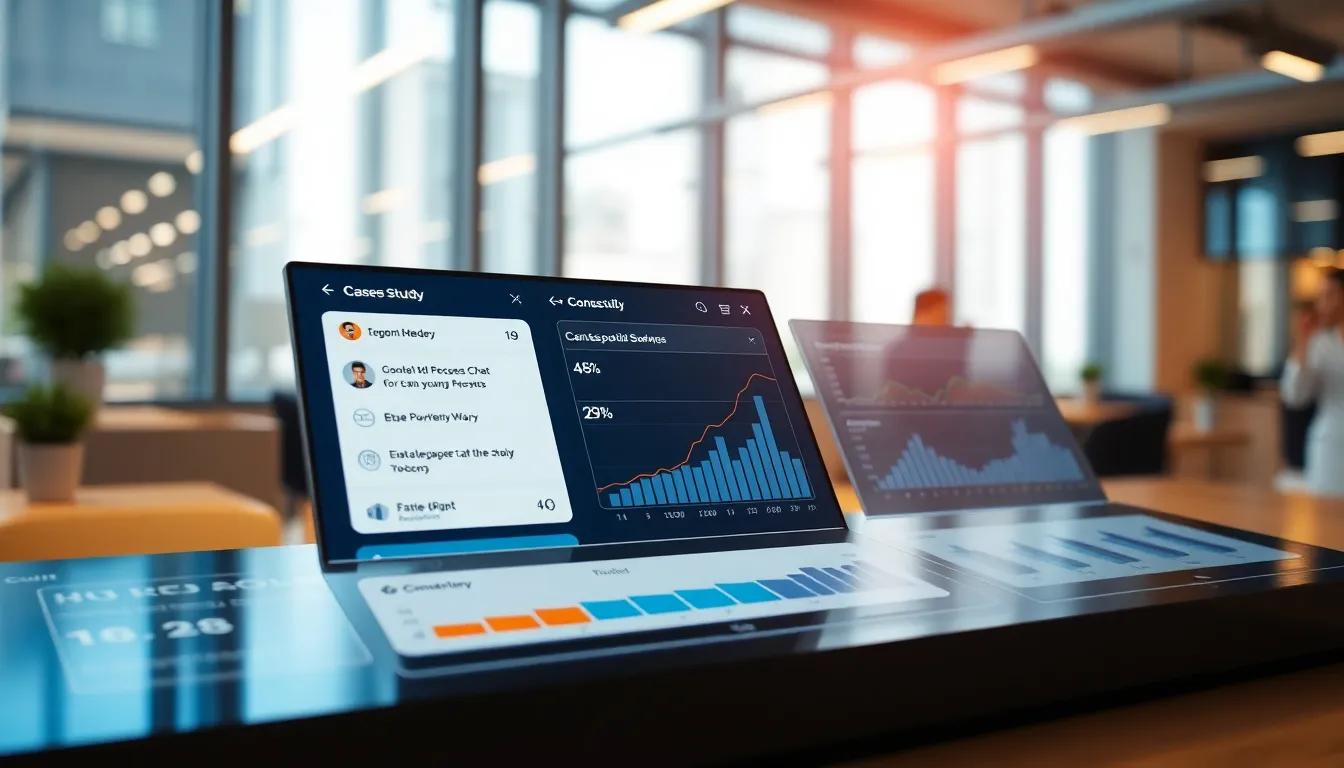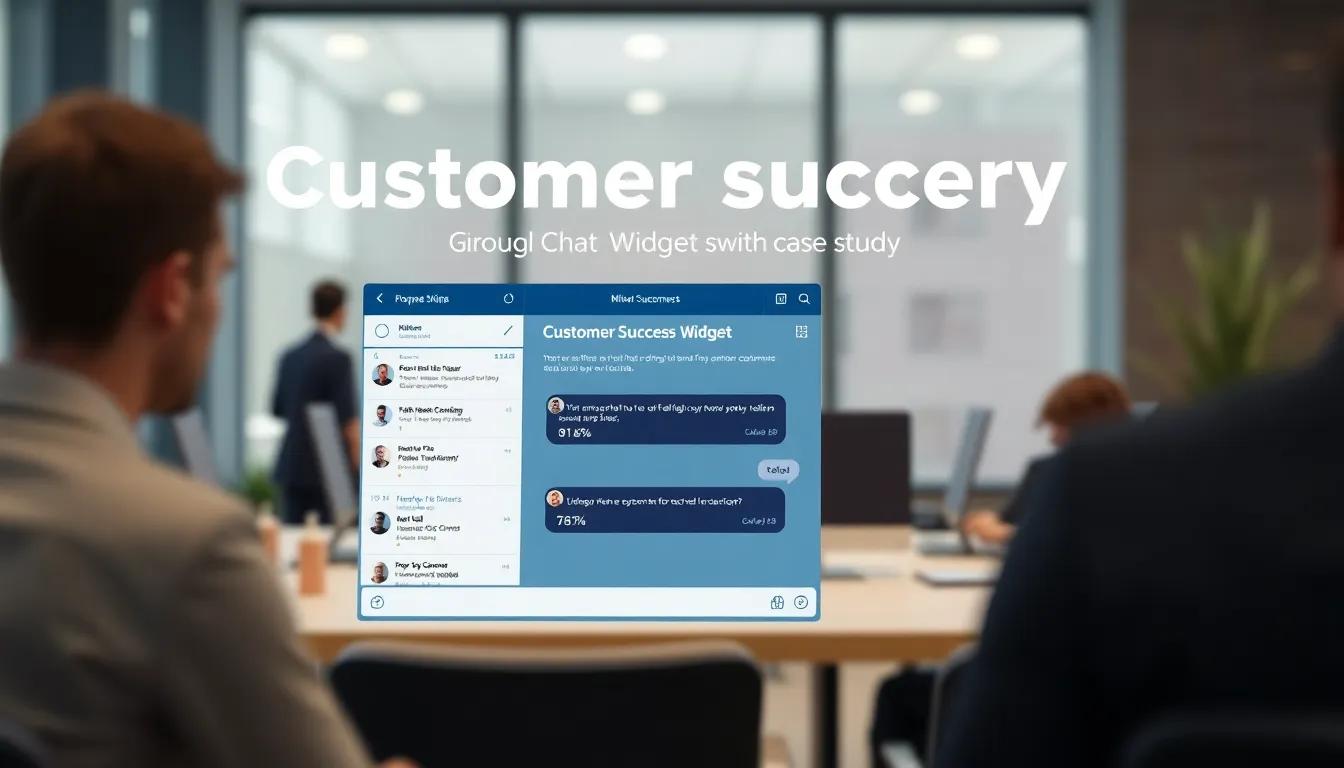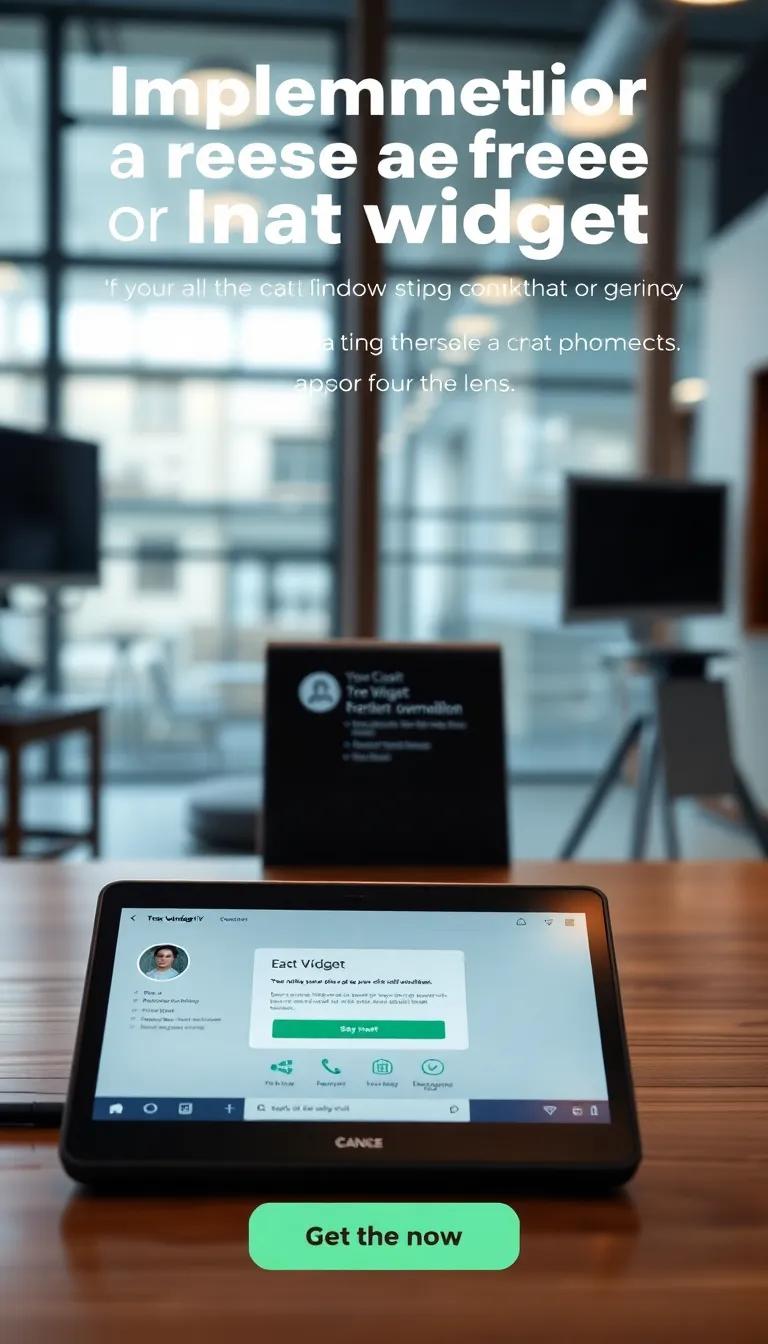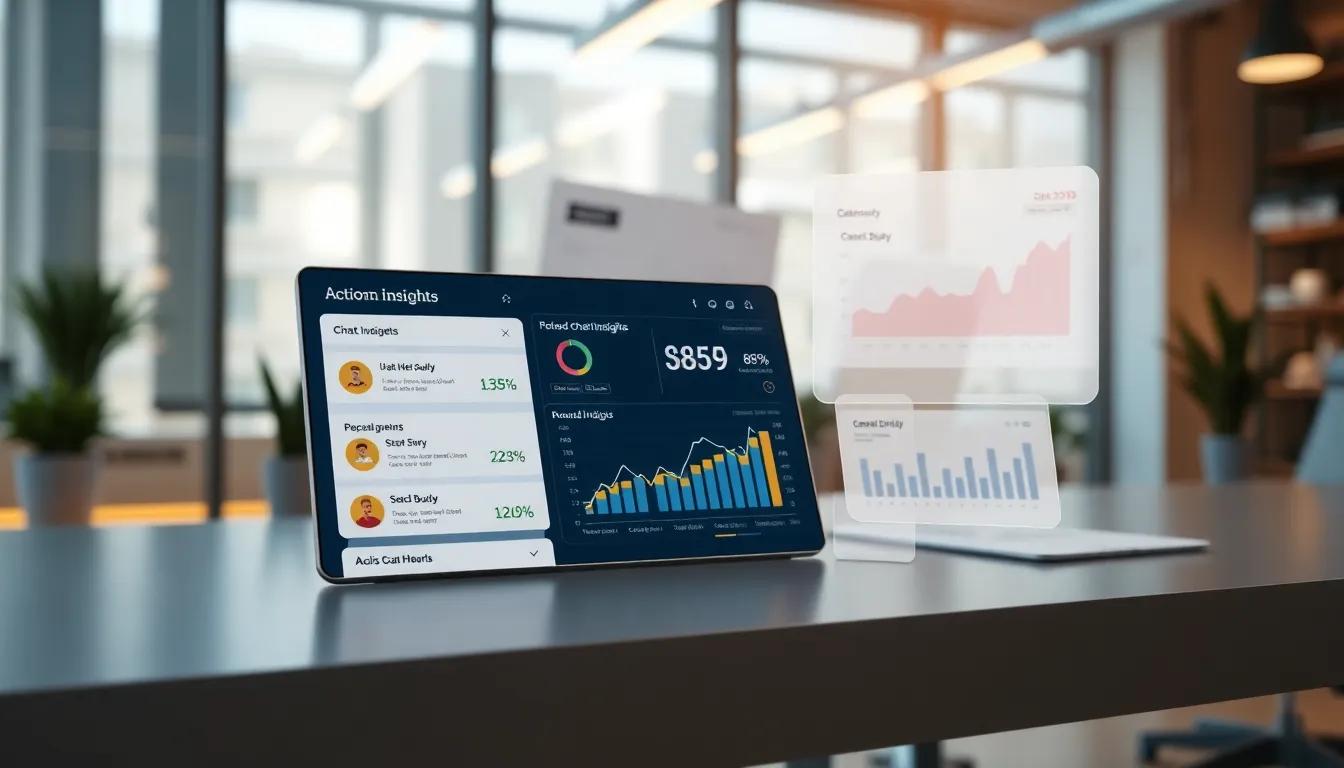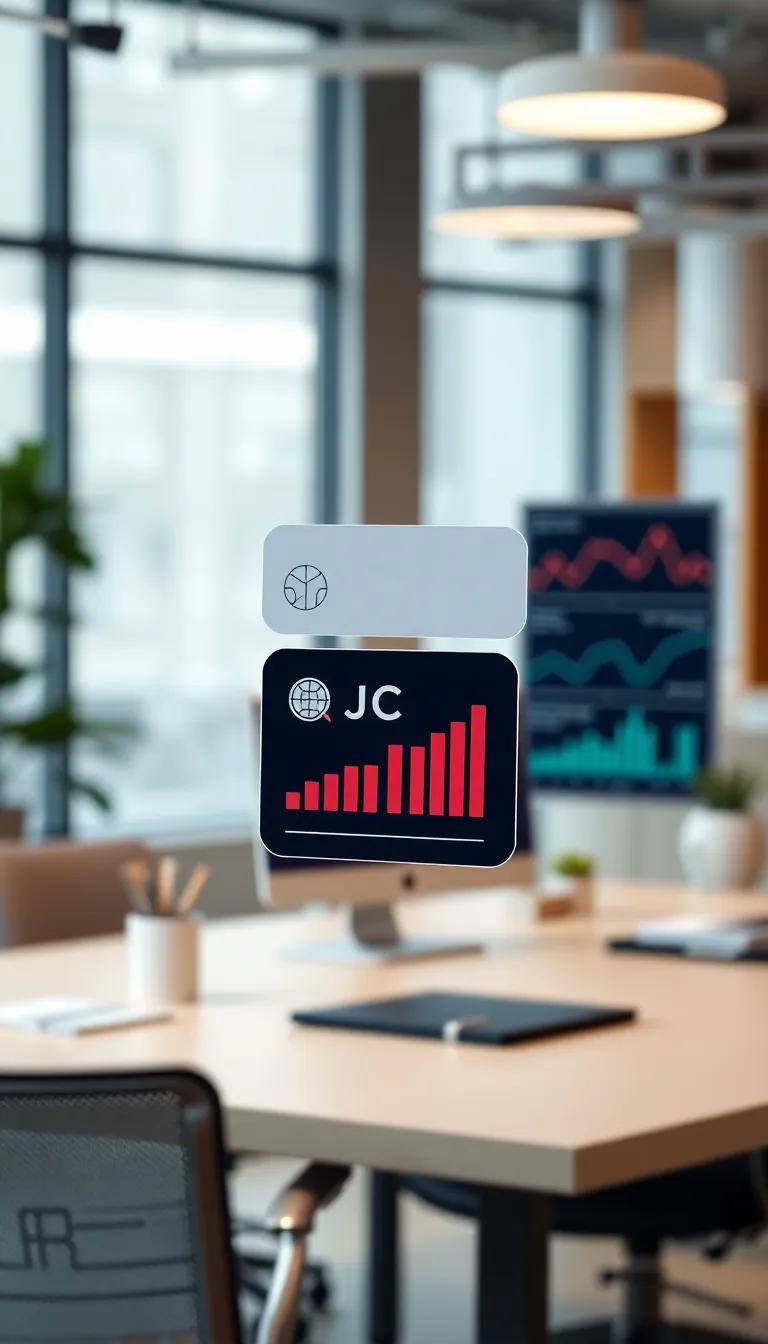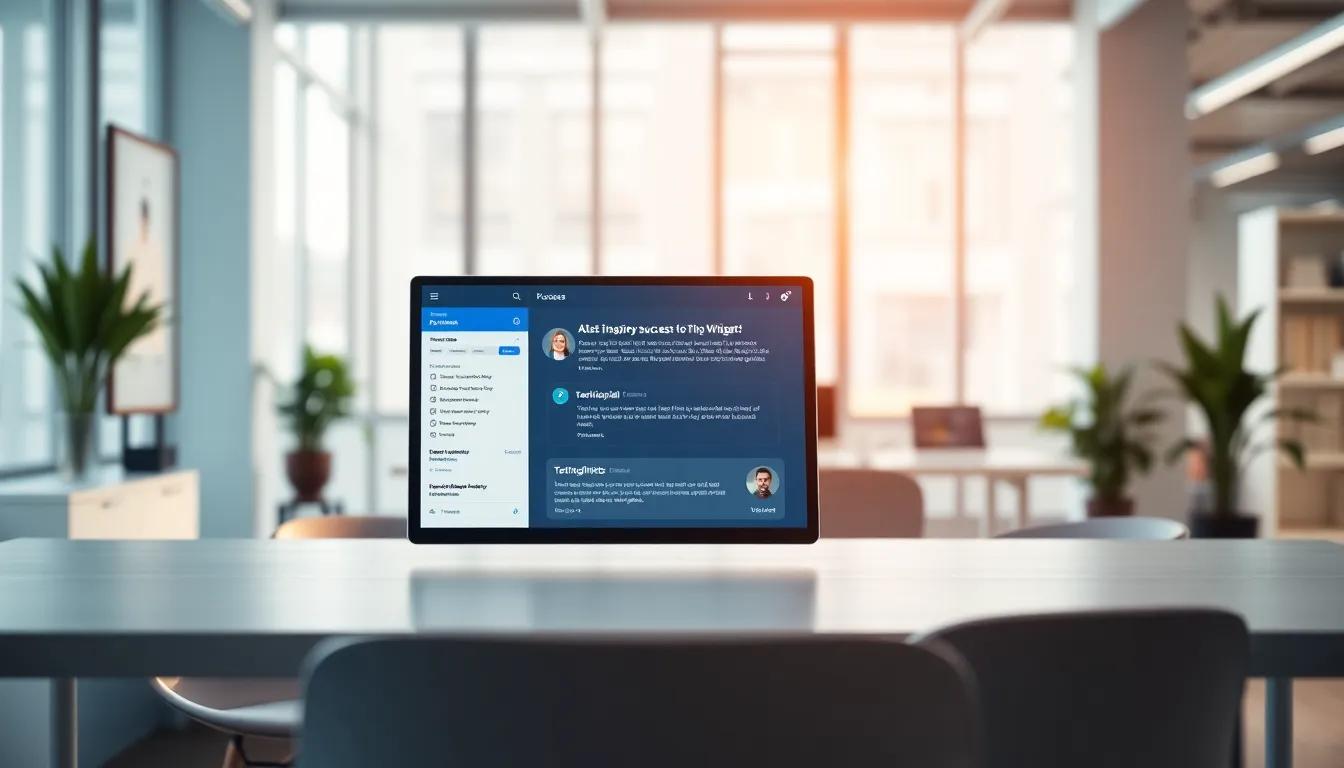Introduction
In today’s fast-paced digital landscape, businesses are constantly seeking innovative ways to enhance customer engagement and boost conversion rates. One effective solution that has gained traction is the implementation of chat widgets on websites. A widget case study showcases the implications of using a free website chat widget to cultivate meaningful interactions between brands and their audience. By leveraging these tools, companies can facilitate efficient communication while gathering valuable insights to tailor their offerings.
Through a comprehensive examination of strategies, real-world examples, and actionable recommendations, readers will understand how to maximize their website’s potential using a chat widget case study. As we navigate this topic, we will explore the impact of conversational marketing on user experience and overall business performance.
Understanding Widget Case Studies Maximize Conversions with a Focus on Performance
Defining Widget Case Studies and Their Relevance
A widget case study is an in-depth examination of the implementation, performance, and impact of a chat widget on a website. These case studies are essential, as they offer insight into how chat widgets can enhance user interactions and drive conversions for businesses. By documenting the experiences and outcomes of various organizations that have integrated such tools, businesses can better understand the potential benefits and pitfalls of adopting a similar approach.
Key Metrics for Measuring Success
To gauge the effectiveness of a chat widget, several key performance indicators (KPIs) should be analyzed. These include:
- Conversion Rate: The percentage of visitors who take a desired action, such as making a purchase or signing up for a newsletter, after interacting with the chat widget.
- Engagement Rate: This reflects how frequently users interact with the widget, including the number of chats initiated and the length of conversations.
- Customer Satisfaction Scores: Feedback collected from users can provide insights into their experiences and how well their needs were met through the widget.
- Response Time: The time taken to respond to customer inquiries can significantly influence customer satisfaction and retention.
Analyzing these metrics allows businesses to identify strengths and weaknesses in their customer engagement strategies, making it easier to optimize their approaches. Understanding consumer behavior through such studies also sheds light on what customers value in a digital interaction. Elements such as immediate responses and personalized communication often contribute to higher satisfaction and conversion rates.
Investigating specific cases where businesses have successfully employed chat widgets can reveal patterns in consumer preferences. For instance, a retail company may find that personalized greetings and proactive engagement during peak shopping times can lead to a noticeable increase in sales. By leveraging data from widget case studies, businesses can fine-tune their customer service techniques and identify effective strategies tailored to their unique target audience.
The significance of widget case studies lies in their ability to offer actionable insights. By continuously monitoring performance and analyzing consumer behavior, businesses can maximize conversions, ensuring that their website chat widgets not only engage visitors but also drive measurable results.
Key Benefits of Free Website Chat Widgets Maximize Conversions Through Enhanced User Interaction
Integrating a free website chat widget into your business strategy offers a multitude of benefits that can significantly improve your online presence and enhance customer satisfaction. One of the most notable advantages is the capability to provide immediate customer support. Today’s consumers expect quick answers to their questions, and a chat widget caters to this need, allowing potential customers to engage with your business in real-time. This responsiveness not only aids in addressing customer inquiries but also fosters trust, leading to higher conversion rates.
Another major benefit is enhanced user interaction. Engaging conversations through a chat widget encourage visitors to participate actively on your site, resulting in a more immersive user experience. By enabling instant communication, businesses can foster a relationship with users, making them feel valued and understood. This level of engagement can convert casual visitors into committed customers. Furthermore, an interactive experience increases dwell time on the website, positively influencing search engine rankings.
Free chat widgets also allow for better customer insights. As users interact through the chat function, businesses can gather valuable data regarding customer preferences and behavior. This information is instrumental in tailoring marketing strategies and improving the overall user experience. The discussions can yield insights into frequently asked questions, identifying common pain points, and highlight areas where your products or services may be particularly appealing. Leveraging this data can help refine your business offerings and create a targeted strategy that resonates with your audience.
Scalability is another crucial aspect of free website chat widgets. As your business grows, these tools can easily accommodate increased volumes of inquiries without necessitating significant additional investment. This adaptability can optimize labor costs while ensuring that customers receive timely support, ultimately enhancing satisfaction and retention rates.
Incorporating a free chat widget into your website isn’t just beneficial; it’s a transformative strategy that unlocks potential across several dimensions. By providing immediate support and boosting user interaction, businesses can engage more effectively with their audience while also gathering invaluable analytics. This powerful combination promotes a higher conversion rate, fulfilling the overarching goal of any digital strategy.
How to Implement a Free Chat Widget Maximize Conversions With A Widget Case Study
Integrating a free website chat widget is a strategic move for businesses aiming to increase conversions. The process involves several steps, and understanding the necessary tools, plugins, or software solutions can simplify implementation.
Choosing the Right Widget
The first step in implementing a chat widget is selecting the right one for your website. There are numerous free options available, such as Tidio, Drift, and WP Live Chat Support. Each of these platforms offers various features, and it’s essential to choose one that aligns with your business needs. Look for functionalities like automated responses, user analytics, and customization options to enhance user experience.
Setting Up the Chat Widget
Once you’ve chosen a chat widget, the setup process typically involves signing up for an account on the chosen platform. After creating your account, you will need to generate a code snippet provided by the chat service. This code snippet is what you’ll integrate into your website’s HTML.
For WordPress users, many chat plugins can be installed directly from the dashboard. Plugins like Tidio and WP Live Chat Support allow for easy integration by simply activating the plug-in. After activation, you will follow the prompts on the plugin to connect it to your widget account. If you are using a custom-built website, you can manually add the code snippet to your site’s footer or header section, ensuring it appears on every page.
Customization Options
Most chat widgets come with customization options to match the look and feel of your brand. You can modify colors, fonts, and even position on the screen to ensure it blends seamlessly with your existing design. Never underestimate the importance of an aesthetically pleasing chat interface—it can significantly impact user interaction and conversion rates.
Another feature worth exploring is automated messaging. Setting up welcome messages or proactive chat invitations can engage visitors effectively. Tools like live chat bots can provide quick responses to frequently asked questions, thereby enhancing overall customer satisfaction.
Testing and Adjustments
After installation and customization, it’s essential to test the functionality of your chat widget. Ensure it works across different devices and browsers. Make adjustments based on user feedback and performance metrics as you gather data post-launch. Regularly revisit your setup to ensure it meets evolving customer expectations and aligns with your conversion goals.
Measuring Success with Chat Widgets Track Key Metrics to Maximize Conversions
Engagement Rates: The First Indicator of Success
When a chat widget is implemented on your website, one of the primary metrics to measure is engagement rates. This metric indicates how frequently visitors are interacting with the chat feature. High engagement rates suggest that visitors find the chat widget appealing and are inclined to communicate, while low engagement may indicate that the widget needs optimization or more visibility. To calculate engagement rates, monitor the number of chat interactions divided by the total number of website visitors over a specific period.
Engagement can be further categorized into various actions such as initiating a conversation, asking questions, or opting for an escalation to a live agent. Tracking these actions allows businesses to refine their chat strategies and improve user experience. Setting engagement benchmarks based on industry standards can guide businesses in assessing their performance effectively.
User Satisfaction: Understanding Visitor Experience
Another essential metric to evaluate after implementing a chat widget is user satisfaction. Gathering feedback through post-interaction surveys can offer invaluable insights into how visitors perceive the chat service. Questions may include rating their overall experience, the helpfulness of the chat, and whether their inquiries were resolved satisfactorily.
High levels of user satisfaction often correlate with improved customer retention and brand loyalty. By analyzing this feedback, organizations can identify strengths and areas for improvement in their chat functionality, ultimately leading to enriched user experiences that can foster loyalty and encourage repeat visits.
Sales Conversions: The Ultimate Metric of Success
Sales conversions stand as the most significant metric for assessing the success of a chat widget. Businesses can track conversions by analyzing how many chat interactions lead directly to completed purchases or specific actions, such as signing up for a newsletter. By utilizing tools like conversion funnels, companies can pinpoint which conversations are most effective in driving sales.
Comparative analysis of conversion rates before and after implementing the chat widget can provide a clear picture of its impact on sales. It might be helpful to segment this data further—distinguishing between new versus returning customers or analyzing the types of inquiries that lead to successful conversions. Understanding these nuances is pivotal for optimizing chat strategies that effectively drive sales outcomes.
By diligently tracking engagement rates, user satisfaction, and sales conversions, businesses can continually refine their chat widget strategies to maximize conversions, ensuring that the tool not only serves as a communication bridge but also propels overall business growth.
Challenges and Solutions Maximize Conversions With A Widget Case Study
Common Challenges Companies Face with Chat Widgets
The implementation of chat widgets offers fantastic opportunities for engagement and conversions, yet numerous companies encounter specific challenges that can hinder their effectiveness. One prevalent issue is the technical difficulties that arise during integration. Many businesses struggle with ensuring that the chat widget seamlessly fits into their website architecture without disrupting existing functionalities. This can lead to a poor user experience and ultimately deter potential customers.
Another challenge is user hesitation. Customers may be uncertain about using chat features, fearing spam or irrelevant interactions. When confronted with a chat widget upon entry, many users may feel overwhelmed or confused about whether to engage. This indecision can result in missed opportunities for the business and a negative impact on conversion rates.
Proven Solutions to Enhance Chat Widget Effectiveness
To tackle these technical issues, companies should consider investing in a chat widget solution that offers robust technical support. This includes ensuring that the widget is compatible with various website platforms and enabling features that allow for easy customization. Regular updates and a responsive helpdesk can significantly alleviate the technical challenges that businesses face.
To address user hesitation, it is beneficial to implement proactive chat strategies. For instance, utilizing triggers to engage users when they exhibit specific behaviors—such as spending a certain amount of time on the page or visiting critical sections of the website—can encourage interaction without feeling intrusive. These subtle nudges can convert a hesitant visitor into an actively engaged customer.
Employing user-centric design principles can significantly enhance user engagement. By ensuring that the chat widget is visually appealing, easy to access, and straightforward to use, businesses can reduce user apprehensiveness. A well-designed chat interface should clearly communicate its purpose, emphasizing the benefits of engaging with a live representative or chatbot.
Companies should also monitor user feedback to adjust their approach continually. By applying insights gathered from user interactions and satisfaction metrics, businesses can make data-driven decisions to refine their chat widget strategies. Consequently, this will lead to improved user experiences, higher engagement rates, and increased conversions, ultimately unlocking the full potential of their chat widget to drive business success.
The Future of Chat Widgets Advancements in AI and User Experience
Trends Shaping Chat Widgets
The landscape of chat widgets is fast transforming, driven by technological advancements and a steadfast commitment to enhancing user experience. As businesses recognize the value of engaging with users through real-time communication, chat widgets are becoming an integral part of website interactions, evolving from basic customer-service tools to sophisticated platforms that leverage artificial intelligence and machine learning.
One prominent trend is the integration of conversational AI capabilities. These advanced systems allow chat widgets to provide more personalized, context-aware responses, creating a dialogue that feels intuitive and human-like. As AI continues to develop, we can anticipate improvements in natural language processing, making interactions smoother and more effective. This shift not only enhances user satisfaction but also results in higher conversion rates, as users feel more understood and valued.
Another significant trend is the increasing focus on user experience design. Organizations are striving to create chat widgets that are not only functional but also visually appealing and easy to navigate. Streamlined interfaces, instant accessibility, and seamless integration with existing website functionality will become standard features. This emphasis on user-centric design ensures that visitors can engage without feeling overwhelmed or confused, ultimately driving higher engagement and conversions.
The Role of Data in Shaping Future Functionality
Data analytics is set to play a critical role in the evolution of chat widgets. By harnessing user interaction data, companies can refine their approaches, offering tailored experiences that resonate more deeply with visitors. Insights drawn from conversation logs and user feedback can guide ongoing improvements, ensuring that chat widgets are continuously evolving in response to user needs.
The potential for customization is another area that will likely see significant advancement. Organizations may adopt chat widgets that can be tailored for specific audiences or occasions, utilizing data analytics to adjust tone, content, and response styles. This level of personalization is expected to create an even more engaging environment, fostering loyalty and encouraging users to return.
As we look forward, the continual advancements in AI, coupled with a relentless focus on user experience, promise to reshape chat widgets dramatically. By harnessing these trends, businesses stand to maximize conversions and unlock new levels of engagement, paving the way for enhanced customer interactions within the digital framework.
Conclusions
The adoption of a free website chat widget is not just about adding a feature to a site; it’s about transforming customer interactions into opportunities for conversions. The insights derived from widget case studies underscore the significant advantages such tools bring, including enhanced customer satisfaction and improved sales performance. By embedding live chat functionalities, businesses can foster a more engaging and personalized user experience.
Successful implementation of chat widgets requires continuous evaluation and optimization. Organizations willing to invest time in understanding user behavior and preferences can reap substantial rewards. By following the outlined strategies, businesses can position themselves to thrive in an ever-evolving digital environment, making the most of their chat widget case studies to improve conversion rates effectively.



